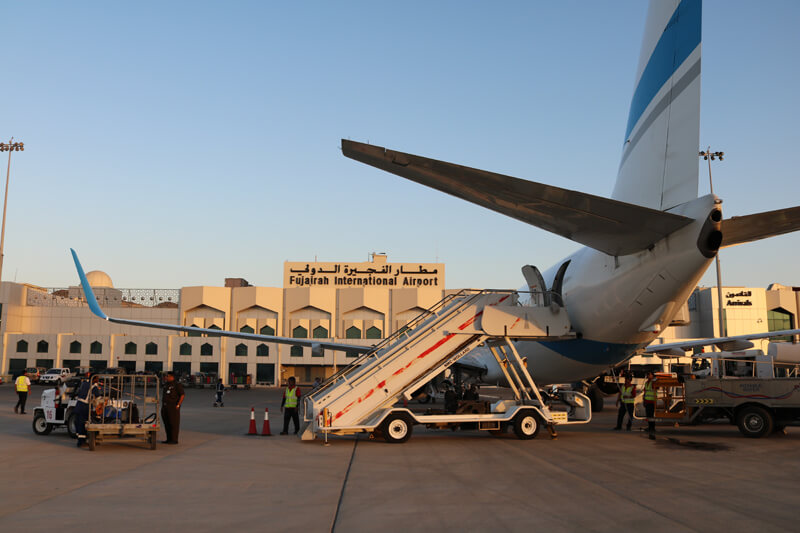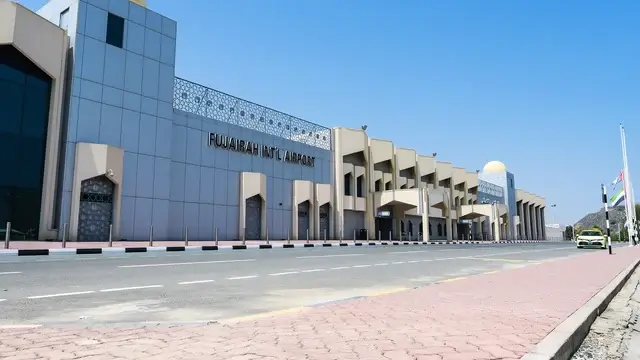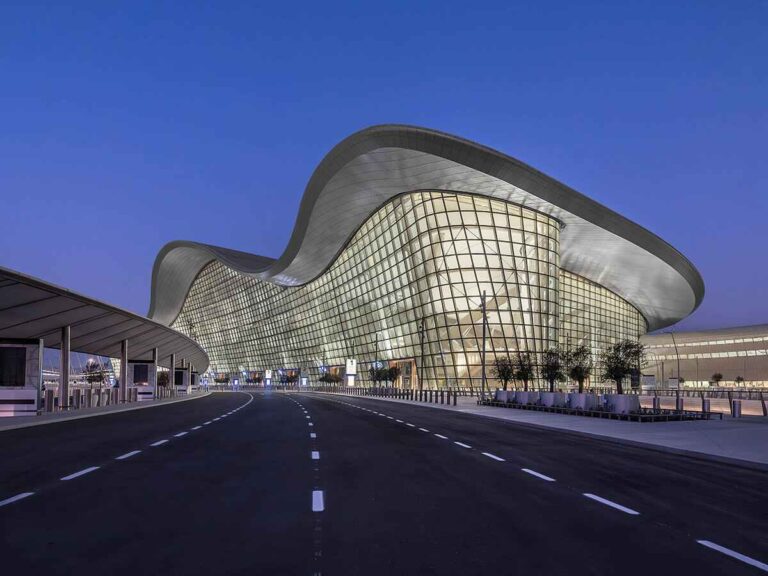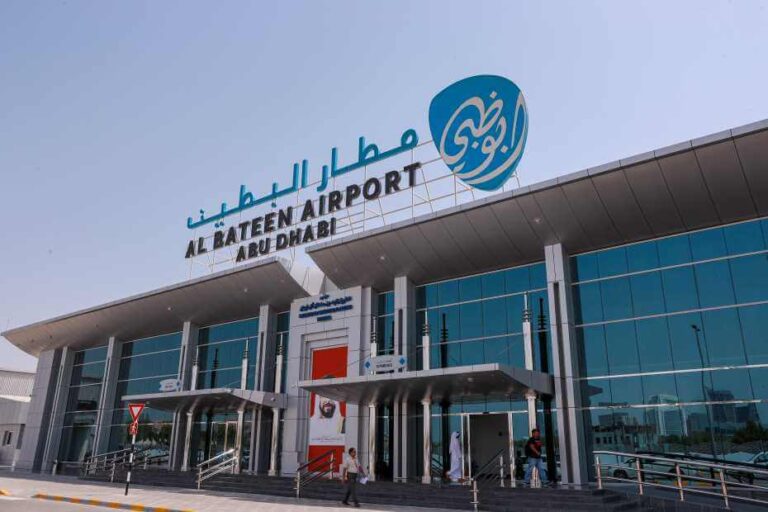Fujairah International Airport, UAE
Few airports in the UAE carry both strategic and geographic significance quite like Fujairah International Airport (FJR). Positioned just 1.9 kilometers south of Fujairah City, this airport connects the Emirate of Fujairah—the UAE’s only emirate on the eastern coast along the Gulf of Oman—to the rest of the world. Beyond being a passenger hub, it plays a vital role in logistics, aviation training, and regional trade, making it a cornerstone of the UAE’s growing air infrastructure network.
An Overview of Fujairah International Airport

Fujairah International Airport (Arabic: مطار الفجيرة الدولي) is managed by the Department of Civil Aviation, Fujairah, and serves both civil and cargo operations. Established in October 1987, the airport was envisioned to complement the UAE’s air transport capacity by providing an eastern gateway alternative to Dubai and Abu Dhabi.
Strategically located near the Port of Fujairah—one of the world’s largest bunkering and transshipment ports—the airport supports multi-modal logistics operations. Its proximity to Dubai, the Northern Emirates, and Fujairah Free Zone makes it an essential hub for business travelers, aviation companies, and cargo operators seeking efficient access to global markets.
History and Development
The story of Fujairah International Airport reflects the UAE’s broader aviation vision—rapid modernization grounded in global connectivity. Since its launch in 1987, the airport has evolved from a modest regional terminal into a high-capacity aviation facility.
In 2014, a Memorandum of Cooperation (MoC) between Abu Dhabi Airports and the Fujairah Department of Civil Aviation marked a pivotal moment. The agreement outlined a comprehensive masterplan to expand both the airfield infrastructure and the passenger terminal.
Following significant upgrades, the terminal now handles up to 2 million passengers annually, a testament to Fujairah’s growing role in the region’s aviation ecosystem.
By 2018, a $180 million contract was awarded to Abu Dhabi Airports, Al Sahara Group, and Orascom Construction to execute the next phase of expansion. The UAE’s Federal Government also financed further developments worth $445 million, ensuring the airport meets international aviation standards and accommodates large aircraft like the Airbus A380.
The New Runway and Advanced Airfield Infrastructure
A major milestone arrived on 3 December 2022, when Fujairah International Airport unveiled its new runway—spanning over 3 kilometers in length and 60 meters in width.
This upgrade included:
- Rapid-exit taxiways for efficient aircraft movement
- Extended and widened taxiways to reduce turnaround times
- Runway strengthening for handling wide-body aircraft
These enhancements position Fujairah as a technically capable and future-ready aviation hub, ideal for both passenger and cargo carriers seeking efficiency outside the UAE’s busier western airports.
Cargo, Maintenance, and Aviation Training
Unlike most airports, Fujairah International Airport is more than a passenger terminal—it’s a multi-sector aviation center. The airport operates:
- A dedicated cargo terminal, facilitating trade across the Gulf Cooperation Council (GCC) and East Africa
- Aircraft dismantling and maintenance services, serving regional aviation companies
- The Fujairah Aviation Academy, which trains pilots and aviation engineers under international standards
These specialized functions make Fujairah a unique node in the UAE’s aviation landscape, supporting logistics, education, and industrial aviation needs.
Airlines and Connectivity
While Fujairah International Airport’s scheduled passenger flights are currently limited, it regularly handles:
- Charter services for tourism and business groups
- Private jets for corporate clients
- Cargo operations connecting Fujairah to international logistics routes
The airport also serves as a backup landing site for major UAE carriers during diversions or weather disruptions on the western coast. Its easy connectivity via the E89 and E84 highways ensures smooth ground transport to Dubai, Ras Al Khaimah, and Sharjah.
Strategic Importance: The East Coast Advantage
Fujairah’s location offers a major logistical and geopolitical edge. Positioned outside the Strait of Hormuz, it allows the UAE uninterrupted access to global shipping routes—vital for trade, energy, and air freight.
This proximity to the Port of Fujairah—the second-largest fuel bunkering facility in the world—creates natural synergies between sea and air freight. For global logistics firms, this integrated ecosystem makes Fujairah a preferred destination for transshipment and re-export operations.
Access, Tourism, and Nearby Attractions
For travelers, Fujairah International Airport is a gateway to the eastern UAE’s natural and cultural gems. Within minutes of landing, visitors can reach:
- Fujairah City’s luxury hotels and Fujairah Corniche
- The Al Bidyah Mosque, the oldest mosque in the UAE
- Hajar Mountains, a popular spot for hiking and adventure tourism
- Snoopy Island, a beloved diving and snorkeling destination in Dibba
Thanks to its location, the airport also serves weekend travelers from the GCC, offering easy access to coastal resorts and mountain getaways.
Fujairah International Airport at a Glance
| Attribute | Details |
|---|---|
| Official Name | Fujairah International Airport (FJR) |
| Arabic Name | مطار الفجيرة الدولي |
| IATA Code | FJR |
| ICAO Code | OMFJ |
| Opened | 1987 |
| Operator | Department of Civil Aviation, Fujairah |
| Annual Passenger Capacity | 2 million |
| Location | 1.9 km south of Fujairah City |
| Runway | 3,000+ meters long, 60 meters wide |
| Website | www.fujairah-airport.ae |
| Contact | +971 9 222 6222 |
Future Prospects: Fujairah’s Rising Aviation Role
The UAE’s federal aviation strategy aims to distribute air traffic efficiently across all seven emirates. As Dubai International Airport (DXB) and Zayed International Airport (AUH) grow busier, Fujairah International Airport is poised to handle overflow traffic, regional cargo, and specialized aviation services.
Upcoming plans include:
- Expanding passenger terminal amenities
- Building new hangars and maintenance zones
- Establishing aviation-linked free zones for aerospace startups and logistics firms
These initiatives align with the UAE’s Vision 2031, positioning Fujairah as a sustainable and future-oriented aviation hub on the eastern frontier.
Frequently Asked Questions (FAQ)
1. Which country is Fujairah International Airport in?
Fujairah International Airport is located in the United Arab Emirates (UAE), specifically in the Emirate of Fujairah.
2. What airlines currently operate from Fujairah International Airport?
Currently, operations are primarily charter, cargo, and private jet services. However, future passenger routes are under consideration as the airport expands.
3. What is the nearest major airport to Fujairah?
The closest major airport is Dubai International Airport (DXB), approximately 120 kilometers west of Fujairah.
4. How can I get from Fujairah International Airport to Dubai?
You can reach Dubai via E84 (Sheikh Khalifa Bin Zayed Road) or E102 (Sharjah–Kalba Road), both offering scenic drives of about 90 minutes.
5. What makes Fujairah’s location unique?
Fujairah lies on the Gulf of Oman, giving it direct access to Indian Ocean trade routes—a key advantage for cargo and shipping industries.
Final Thoughts
Fujairah International Airport isn’t just a regional airport—it’s a strategic asset at the crossroads of aviation, logistics, and tourism. As global trade patterns shift and the UAE continues to diversify its economy, Fujairah stands ready to take flight as one of the country’s most important eastern gateways.
- 410 Bus Timetable, Route & Complete Guide for Abu Dhabi (UAE) - November 25, 2025
- Dubai Vehicle Licensing Services Integration, UAE: How RTA’s Digital Transformation Is Redefining Mobility - November 25, 2025
- Driver Affairs: Empowering the Backbone of UAE’s Road Network - November 25, 2025







